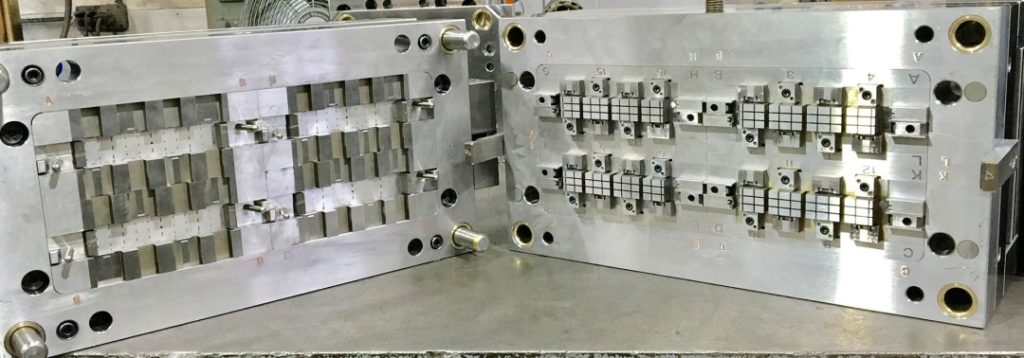Injection Molding Process

An injection mold used in the injection molding process, consists of a two piece mold that is opened and closed to allow plastic to be injected under tremendous pressure when the mold is closed, to create a part. After a short time of cooling, the injection mold is opened and the part is removed. The first component of an injection mold is the mold base. The mold base consists of a series of plates that house the cavity and core inserts that produce the part. The “A” half of the injection mold is the side that is mounted to the stationary side of the machine platen and also houses the sprue bushing which is where the plastic is injected through. This half of the injection mold usually houses the cavity side of the part. During the injection molding process when the mold opens, the part must release from this half of the mold.
The “B” half of the mold is mounted on the moving platen and this half of the injection mold usually houses the core. This half of the injection mold is where the part needs to stay when the two halves open. After the injection mold is open completely, the part is pushed out by a series of different ejection systems, the most common are ejector pins which are housed in an ejector plate. The two halves of the injection mold are located by a series of pins which are called leader pins most commonly located on the “A” half. The “B” half consists of the leader pin bushings. These are precisionly fit to very close tolerances. They also serve to keep the injection mold located while the plastic is being injected under tremendous pressure. In some cases, the leader pins are also combined with mold interlocks. These are usually tapered and help maintain alignment in critical conditions.
The injection mold base also consists of an “ejector system”. This consists of an ejector plate and an ejector retainer plate. The ejector retainer plate is attached to the “B” half by the method of return pins that go through all the plates including the cavity plate. In the ejector retainer plate, ejector pins are mounted. These ejector pins are mounted through the core and/or cavity and are held to a very close tolerance fit to prevent any plastic from leaking. The “A” and “B” plates are usually made from pre-hardened steel and have blind or through pockets machined in them, as well as slide, lock, horn pins, etc. This is a basic overview of the anatomy of an injection mold used in the injection molding process.

Trackbacks/Pingbacks